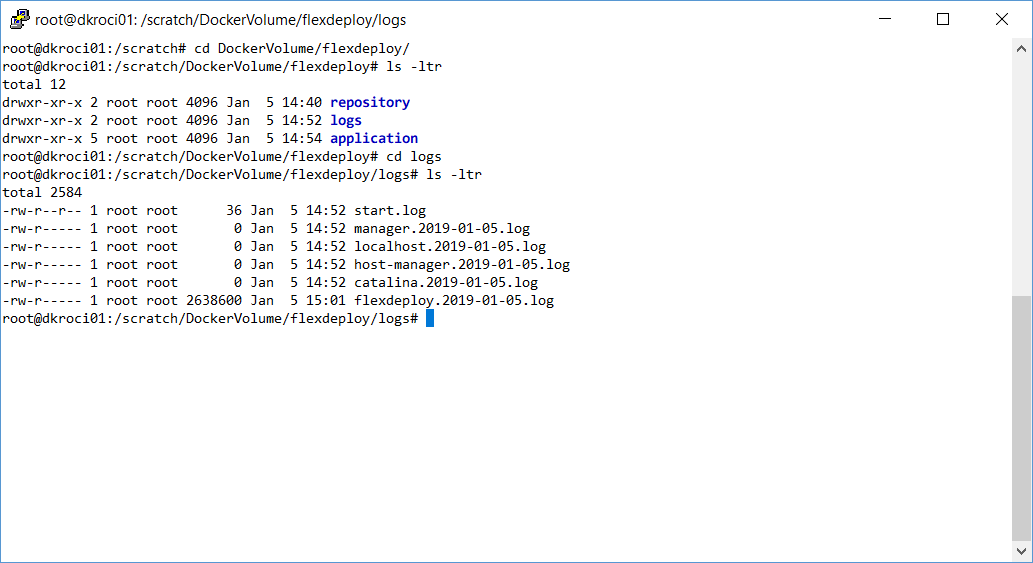...
- Setup docker volume folder and copy plugins in it from download zip.
- Setup FlexDeploy Database
- Pull docker image
- Start container using specific image.
Step 1 - Setup Docker Volume Folder on Docker Host
This particular image only contains FlexDeploy with Tomcat, i.e. data and artifact repository is not part of the container. Hence we need to setup Database and various Folders first.
In this step, we will setup application and repository folder, then copy plugins from download zip in to necessary folder.
| Code Block |
|---|
# adjust folder location as necessary for your Docker Host
mkdir -p /scratch/DockerVolume/flexdeploy
chmod -R 777 /scratch/DockerVolume
cd /scratch/DockerVolume
mkdir application
mkdir repository
cd application
mkdir plugins
cp ~/Tomcat_Complete-5.0.0.2/application/plugins/*.jar .
# ready with docker volume now |
...
Now let's run FlexDeploy docker image. Adjust image name (if you are using tutorial image) and version as necessary.
This particular image contains Oracle XE and only FlexDeploy with Tomcat, i.e. data and artifact repository is all not part of the container. Data is persistent in the containerSo we need to pass various details to docker run command.
Run command example below uses port number 8000 8004 for access to FlexDeploy application, which maps to 8080 port inside docker container. Oracle XE is included as part of this image and it's port 1521 is also accessible on docker host. Adjust port numbersdatabase is referenced using FLEX_DB_URL environment variable and FD_ADMIN_PWD is password for fd_admin user on your database (setup done in Step 2). Adjust Port Numbers, URL, Password, Docker Volume Folder as appropriate for your docker host.
| Code Block |
|---|
docker run --name flexdeploy50 -p 8004:8080 -e FLEX_DB_URL="jdbc:oracle:thin:@129.213.91.244:1521:xe" -e FD_ADMIN_PWD="welcome1" -v /scratch/DockerVolume/flexdeploy:/home/oracle flexdeploy/fd_tcat_50:5.0.0.2 |
Now you can look at logs and other details in docker volume folder. For example,
fd_tcat_xe_50
Start command session to Docker host and make sure you can run docker commands. If necessary sudo to root or other user.
...
